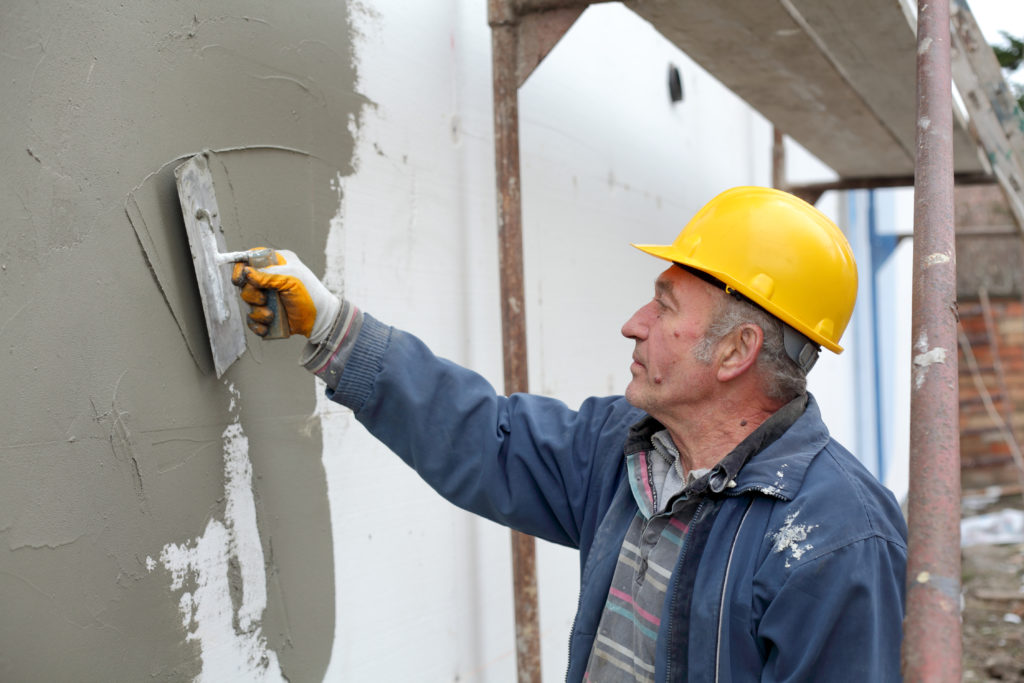Keep Stucco Warm
Stucco is one of the oldest exterior coverings for a home or dwelling. Comprised of lime, cement and sand, stucco was used in different forms by the natives in American southwest, the Moors in North Africa, and the ancient Mediterranean dynasties. It worked well because it sealed over stone, brick and wood, protecting structures from the elements. Today it is a primary exterior choice for homes in desert climates. Traditionally, stucco was composed of lime, sand and water. In modern times, portland cement is added. Adding lime allows the stucco to be flexible when applying and is a sealer against water. Other additives like glass fibers and acrylic strands strengthen mix and prevent it from cracking. For best application/install it is important to be aware of required stucco temperatures and to keep stucco warm.
Best Temperatures for Stucco
Standard recommendations for stucco application temperatures range from 40° F on the cool side to 90° F on the hot side. For best performance, the temperature of newly applied stucco should stay at a minimum of 40°F. Too cold and the water in fresh plaster will freeze and create cracks. Too hot and it could dry too quickly, negatively affecting the hydration process and reducing optimal cure strength.
Cold Weather
The International Building Code for cement plastering requires that “plaster coats shall be protected from freezing for a period of not less than 24 hours after initial set has occurred. Plaster shall be applied when the ambient temperature is higher than 40 degrees Fahrenheit (4.4 degrees Celsius) unless provisions are made to keep cement plaster work above 40 degrees Fahrenheit (4.4 degrees Celsius) during application and 48 hours thereafter.”
Similarly, ACI 24, Guide to Cement Plastering, requires that “plaster installed when ambient temperatures are below 40 degrees Fahrenheit (4.4 degrees Celsius) must be maintained in a sheltered and heated environment with continued curing to assure cement hydration.”
At 32°F (0°C) and below, plaster/stucco will freeze on the wall and cause weakening of the plaster. Damage to the plaster can be so severe that you can rub it off the wall by using your hand.
Important to Know
In colder temperatures:
- Hydration (an important part of the curing process) of cement-based materials is slower at cooler temperature.
- Strength development of the material can be reduced.
- Thermal fluctuations will cause movement in the substrate which can result in cracking.
- Any crack in the substrate, including joints between substrate components, is subject to movement. Cracks that appear narrow in the warmth of the afternoon, widen significantly during the night when the temperature falls. This movement can cause surface cracks that will need repairs.
Some Helpful Stucco Installation Tips:
- Do not apply plaster/stucco to frozen surfaces.
- Know the extended weather forecast in order to plan for the install.
- Keep stucco warm
at 45 °F (7.2°C) or higher if possible. - Plan tenting/enclosures for proper application under cold conditions to avoid freezing –make sure your enclosure will withstand wind and rain.
- Adequate ventilation should be engineered into the enclosure for safety and to provide
- or proper air movement for curing. Avoid using gas, kerosene or other fossil fuel heaters because they can cause rapid carbonation of cement-based material during initial set and cure.
- Ensure that the heat source can run long enough before and after the application for proper conditioning and cure times.
- Use a pre-blended plaster/stucco to eliminate the need to heat the sand and frozen sand piles.
- Water can be heated to accelerate the set and provide added protection of the cement paste. Do not heat the plaster/stucco mixture to more than 120°F.
- Reduce the amount of mixing water to the practical minimum to minimize shrinkage cracking.
How to Keep Stucco Warm
Pre-Application
If you mix your own stucco, consider using a drum or bucket that you can warm with a blanket. This will keep your materials at appropriate temperatures during the entire install.
Post-Application
Get a salamander and a license for operation. A salamander heater is any of a variety of portable forced air or convection heaters. They can be electric, or gas powered and work well within an enclosure to help maintain temperatures after application.
If your enclosure heater operates with a propane tank, consider a gas cylinder wrap or propane blanket that will help maintain pressure and optimize the performance of your tank.
Frequently Asked Questions
How cold is too cold for stucco?
Stucco should not be applied when the temperature is below 40°F, as the water in the mix can freeze, compromising the curing process and leading to cracks.
Does stucco keep heat out?
Yes, stucco's thick layers provide a strong insulating barrier that helps keep heat out in the summer and retain warmth in the winter, enhancing energy efficiency.
Is stucco a good insulator for a house?
Stucco is a good insulator due to its dense, cementitious nature, which helps maintain a stable indoor temperature by keeping homes cooler in summer and warmer in winter.
Is stucco safe for a fireplace?
Stucco is safe for fireplaces as it is durable, fire-resistant, and adds a rustic charm, though it may develop cracks over time.
Cure your stucco faster and better in cold weather conditions with Powerblanket.



